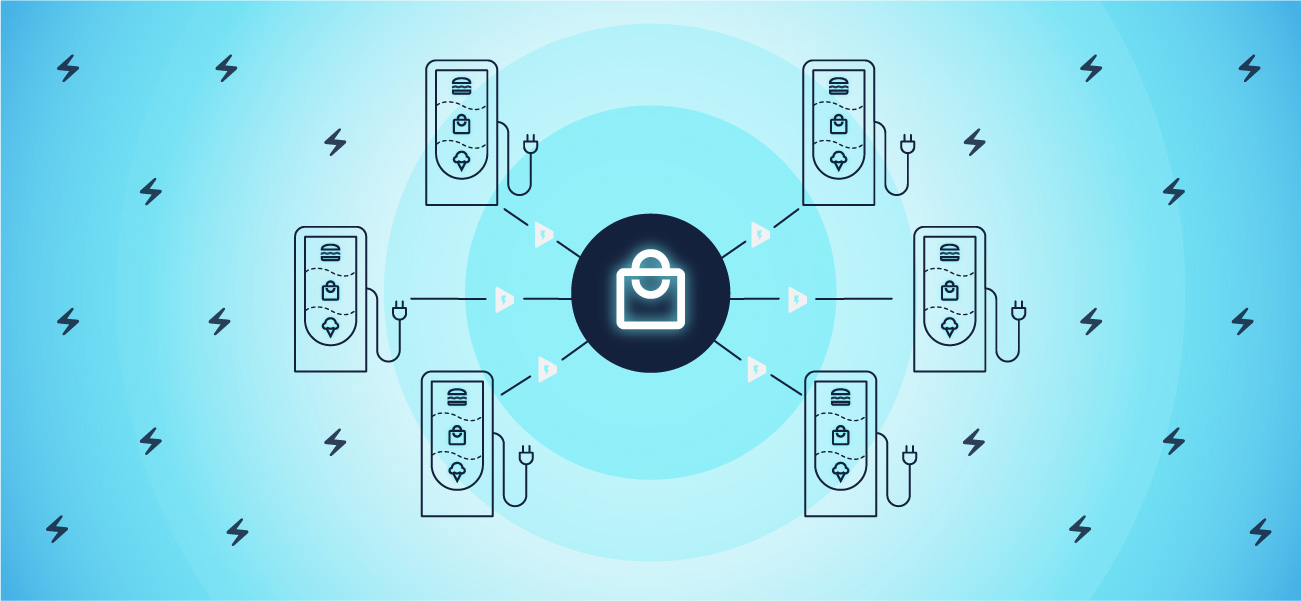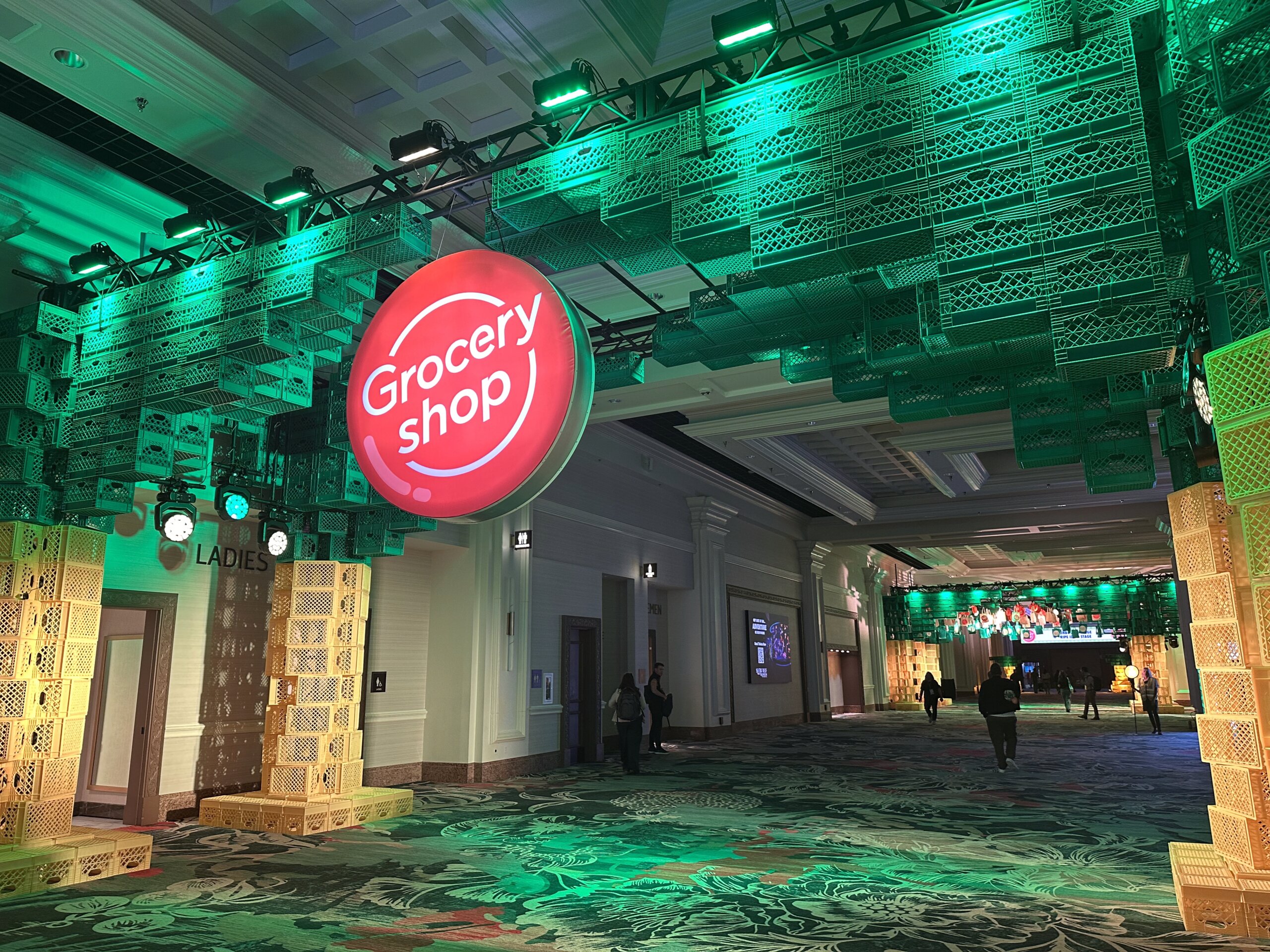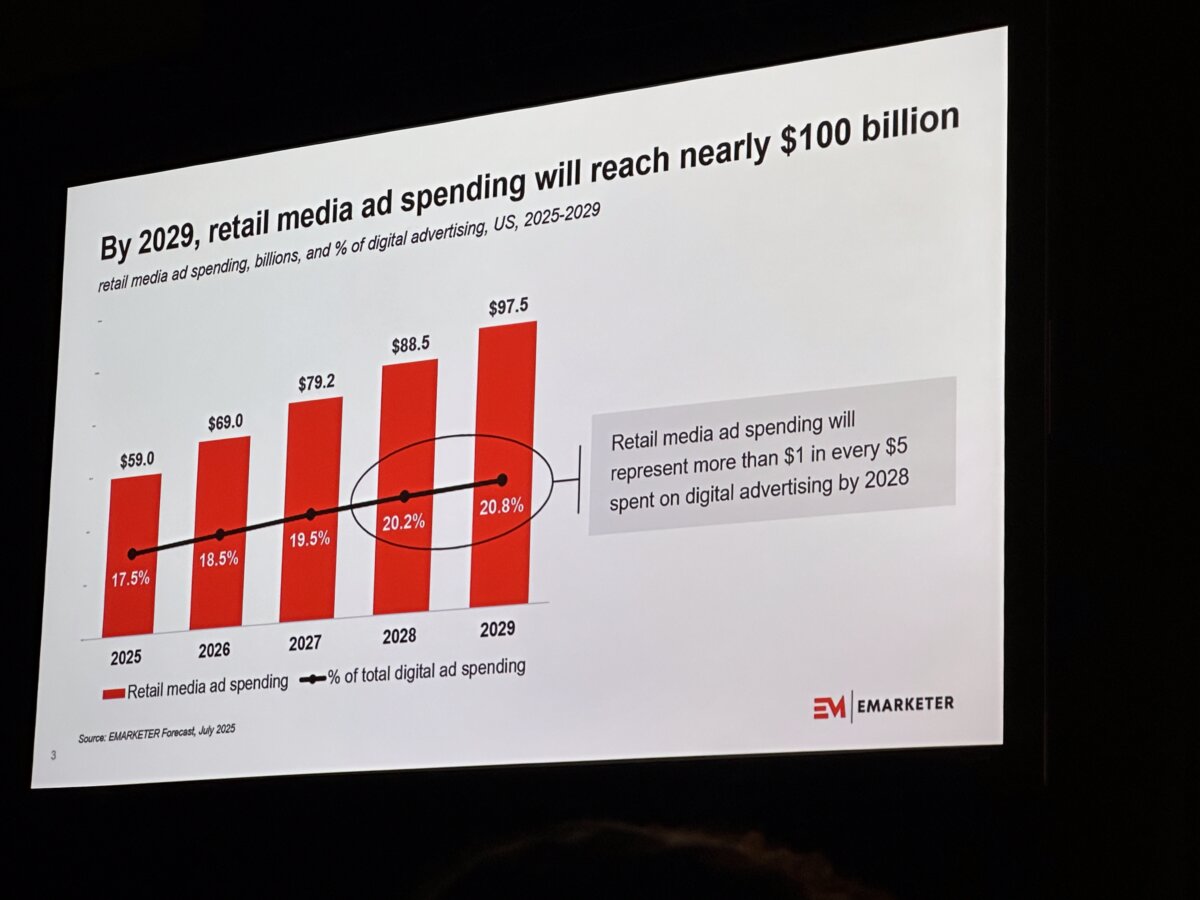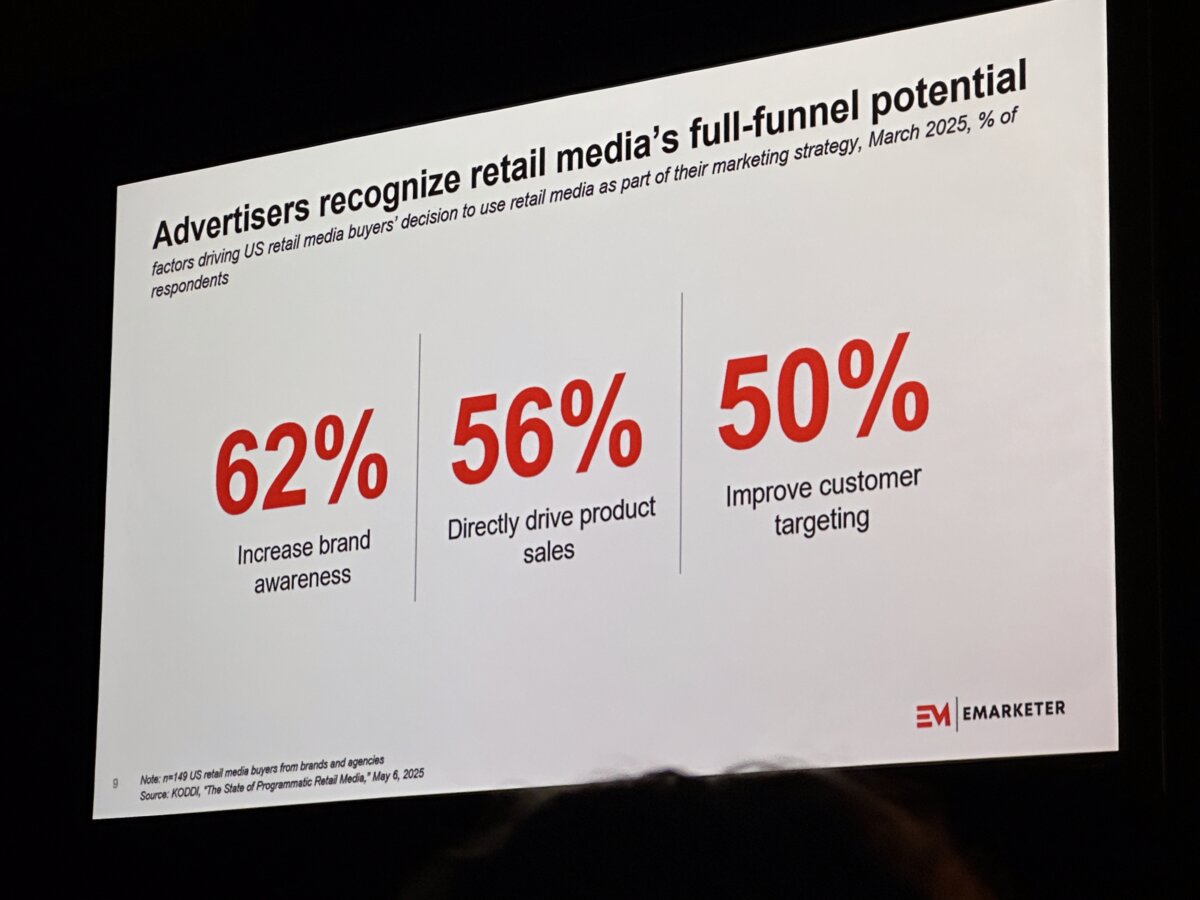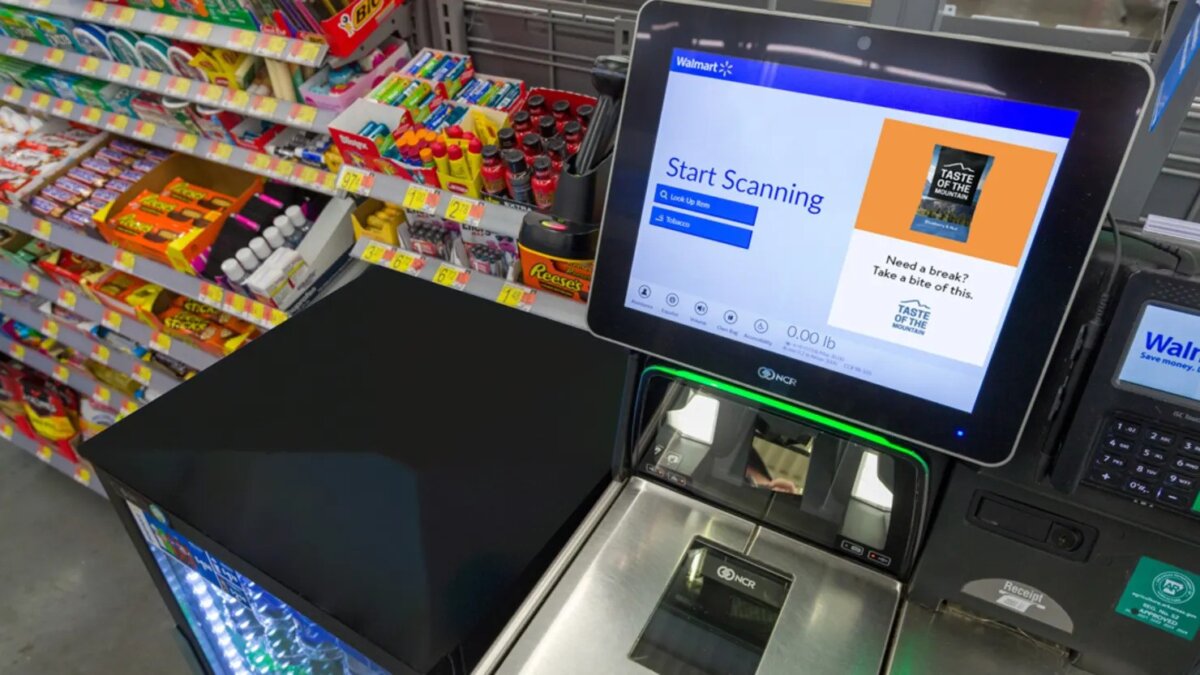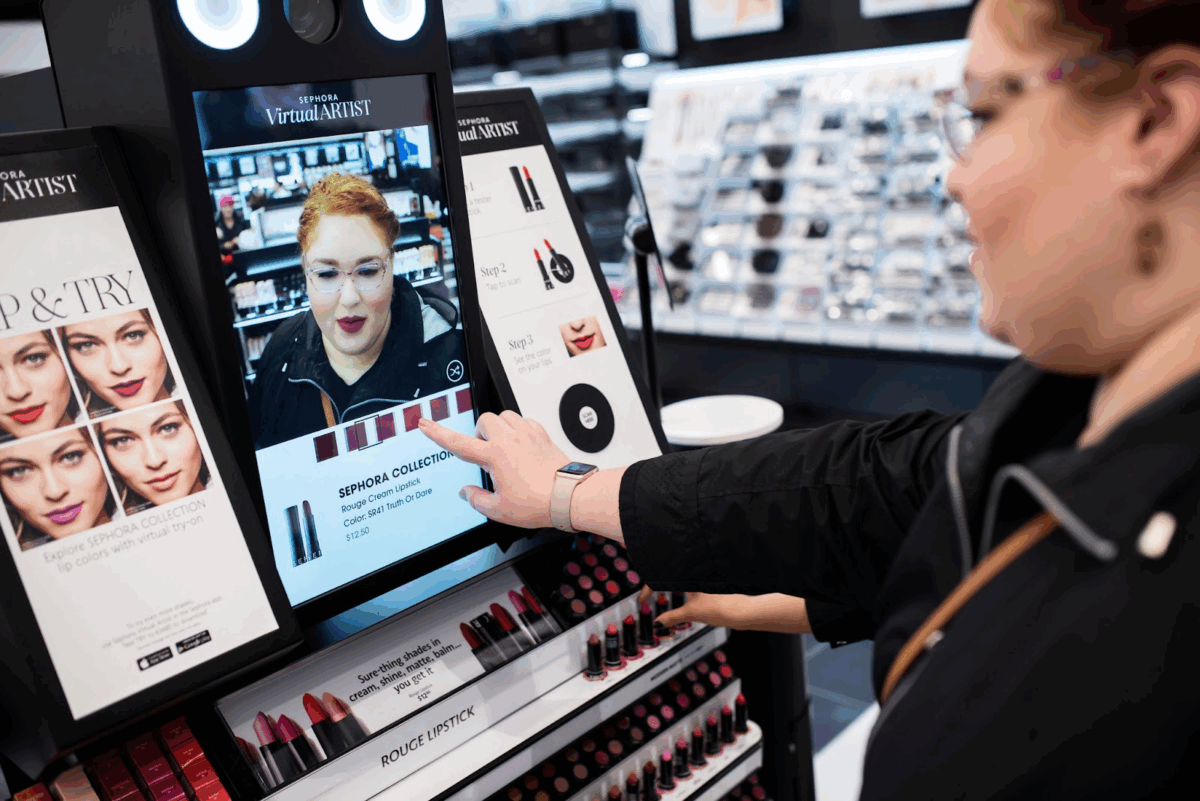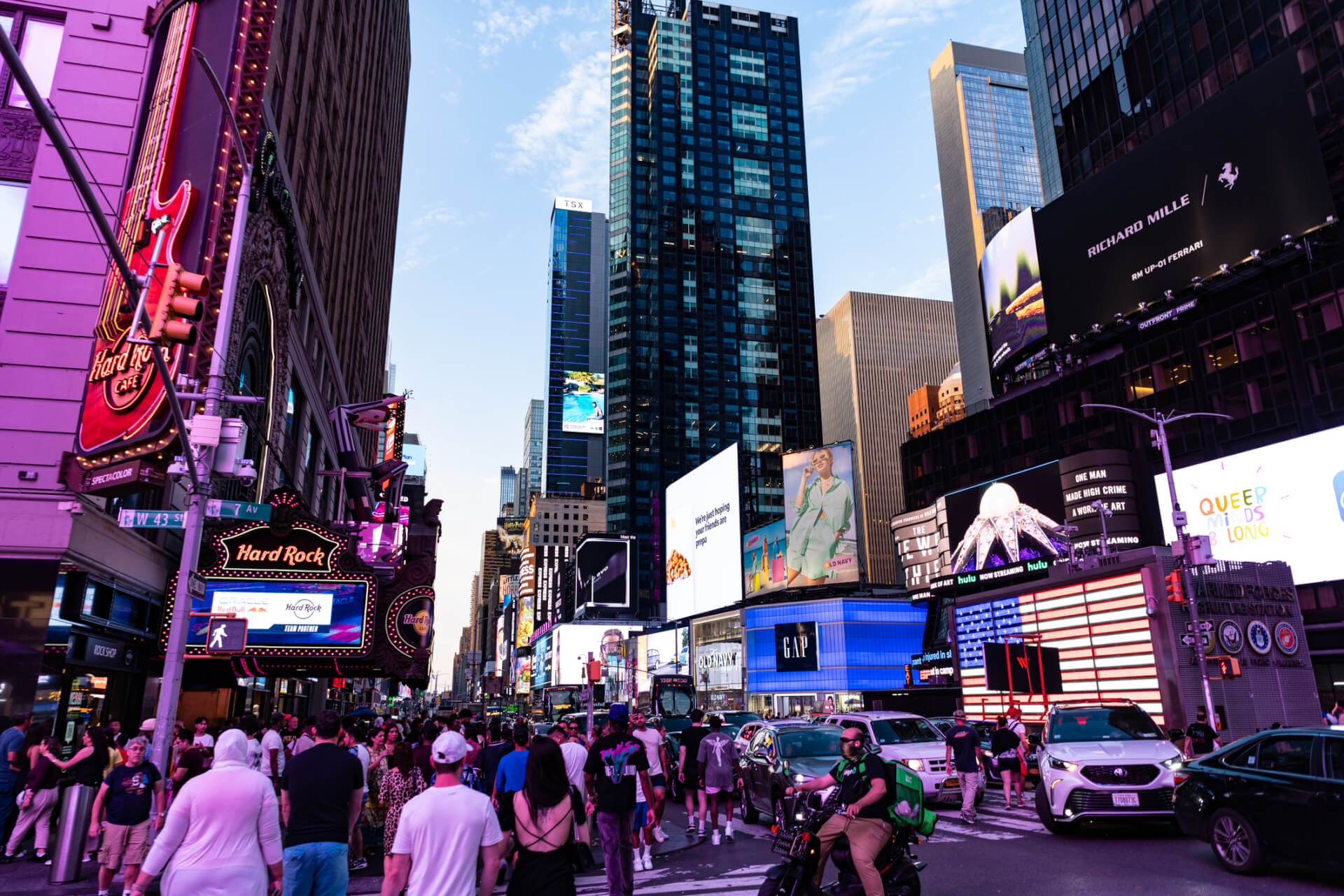| October 11, 2021
EV charging networks are here: What they mean for DOOH advertising
With more electric vehicle (EV) drivers than ever before, EV charging networks are appearing rapidly across the globe. In fact, the EV charging station market is projected to reach $823 billion by 2028, with emerging companies like ChargeEuropa, Swiftmile, and Revolt leading the charge. And while charging stations have been around for a while, especially in urban areas, many EV businesses are starting to equip them with digital ad displays similar to those of urban panels, street furniture, or gas stations.
Offering countless benefits for both the environment and drivers, these premium charging stations are also a promising new way to help advertisers reach highly sought-after audiences. Let’s take a look at some of the top reasons why advertisers shouldn’t ignore this huge opportunity.
Create a positive brand association
Overall, the electric vehicle industry is well-regarded by communities thanks to its social, environmental, and economic advantages. As a result, brands advertising on EV charging stations are more likely to be viewed in a positive light when they’re associated with being part of a meaningful change. Advertisers can use this opportunity to elevate their brand by showing consumers that they’re contributing to a cleaner, more sustainable environment and a better future.
This is particularly important to younger consumers, like millennials and Gen Zs, who are more environmentally conscious and interested in sustainability. According to Deloitte, 50% of Gen Z has reduced how much they buy, making them more conscious of how they spend their money. Advertisers should therefore ensure that their brand messaging aligns with consumers’ values if they hope to capture their shopping dollars. And with significant buying power, reaching these young consumers is highly desirable for brands, even if they’re not the main drivers of electric vehicles.
Target audiences beyond EV drivers
With the new wave of charging stations built as part of larger urban installations or retail trade areas, advertisers have the potential to target audiences beyond the traditional affluent, tech-savvy EV driver. Similar to bus or transit shelters, charging stations placed in key areas can display messaging that’s visible to virtually anyone in the vicinity, extending ad reach to a wider audience.
What makes charging stations unique from other types of DOOH advertising, like billboards, is that they’re typically installed in a variety of high-traffic areas, helping advertisers reach many different verticals. They’re almost always at eye-level with both drivers and passersby, making them an attention-grabbing medium that can’t be ignored. Since these screens are relatively new, they’re sure to capture the interest of audiences, creating a perfect opportunity for advertisers to deliver their brand’s message in a captivating way. Screen synchronization, for example, enables multiple screens to deliver the same ad, giving advertisers the unique opportunity to tell stories that can be displayed in a creative, eye-catching way. Playing an ad from one screen to another adds a WOW factor to your messaging, making both drivers at the screen level and extended audiences more attentive to what’s playing on-screen.
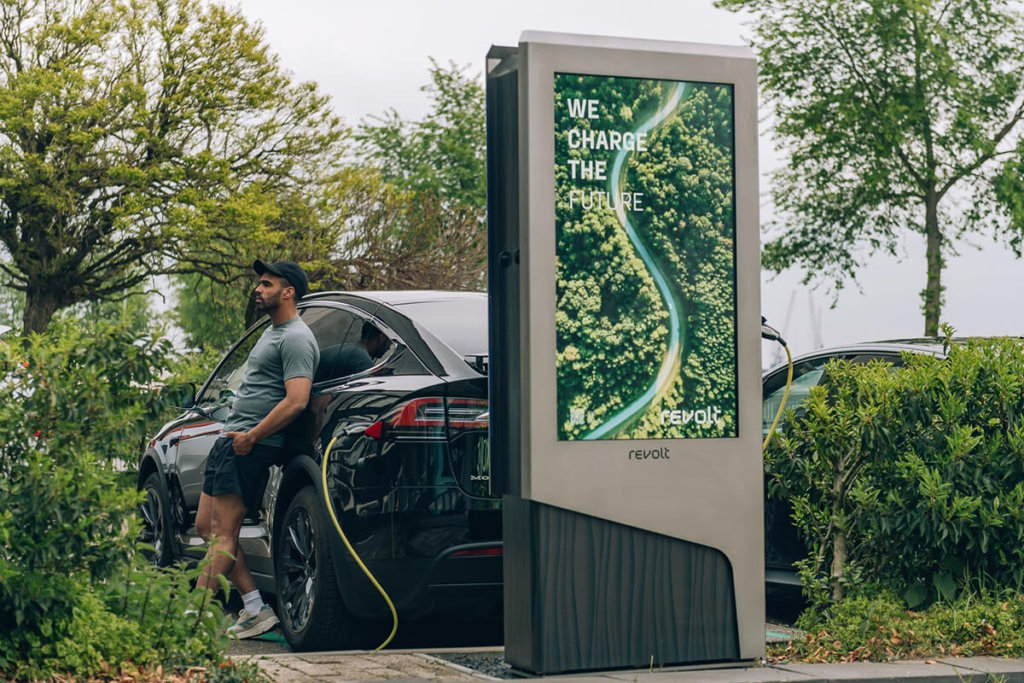
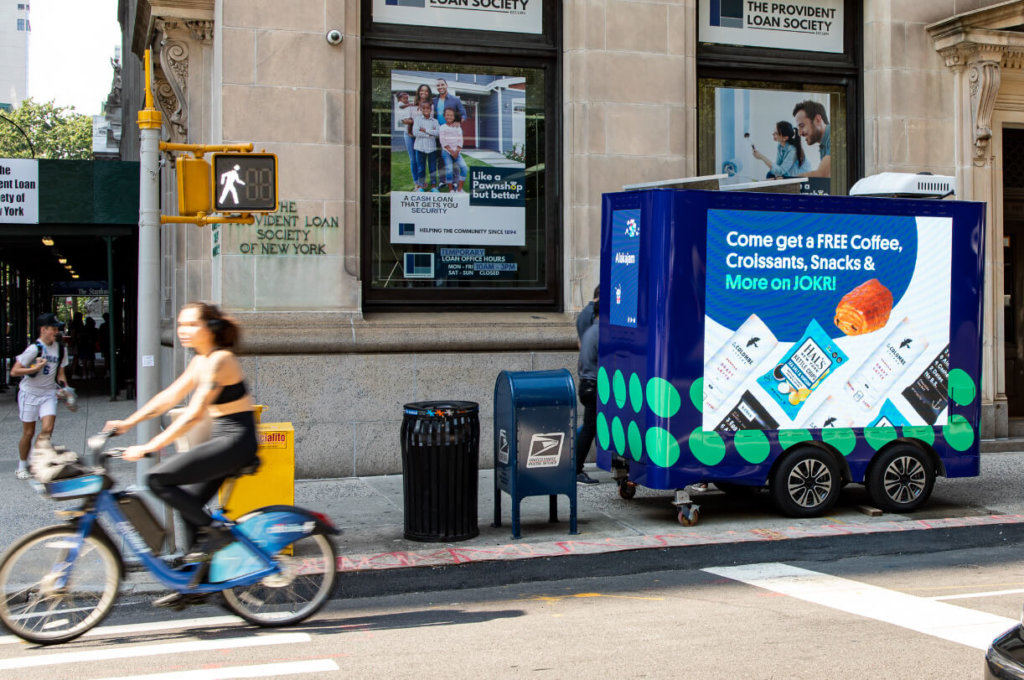
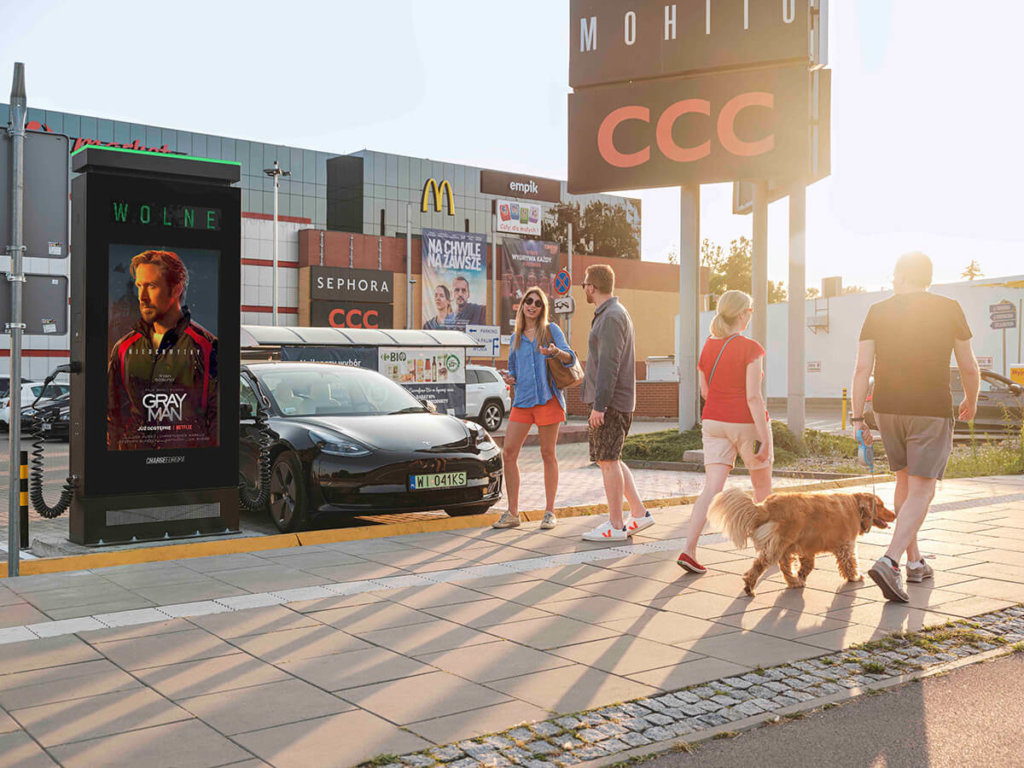
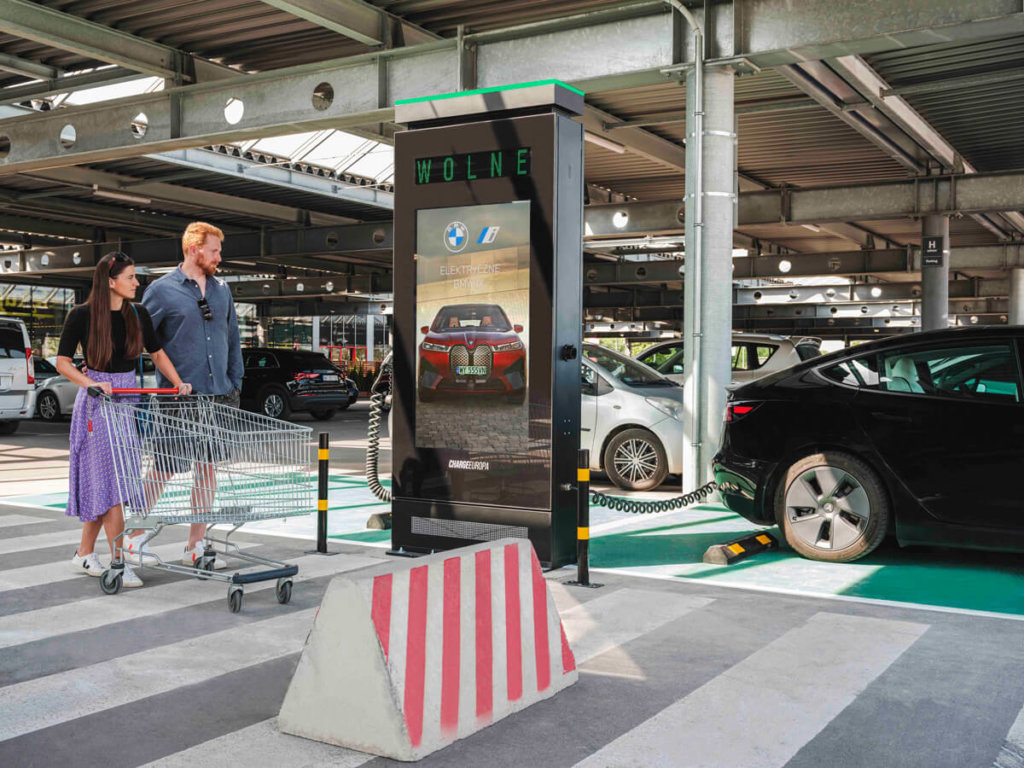
Lift engagement & boost sales with interactive ad content
Studies have shown that today’s consumers want charging stations near more of their daily activities and destinations, like grocery stores, malls, restaurants, and gyms. These are all venues where audiences are likely to spend long periods of time, considering it can take drivers an average of 30 minutes to top up the charge of an electric vehicle, depending on the make and model. To fully charge using a public charging station can take drivers at least an hour. So how can advertisers take advantage of these long dwell times?
One way is to utilize interactive content in DOOH messaging. QR codes or other interactive content can encourage audiences to engage with a brand while they wait for their cars to charge, like visiting a website or social media page. A popular point of interest for advertisers, retail trade areas like malls and shopping centers are increasingly common locations for charging stations. Advertisers can run DOOH ads that promote their brand, encouraging viewers to head in-store and spend more time shopping while their cars charge. When placed in proximity to businesses, brands can also utilize charging station screens to influence late-stage buying decisions by highlighting promotions or drive-to-store messaging. A brand can target screens in a mall parking lot, for example, delivering messaging that promotes a 20% off sale happening nearby. This also adds an attribution factor to a campaign if a brand can observe an increase in sales across a particular retail trade area where screens are located.
With many screens available for programmatic transactions, advertisers can easily select where and when they want to run their dynamic DOOH campaigns, delivering highly-targeted, real-time impressions. Data triggers like weather, for example, can be leveraged to reach audiences with contextual messaging, like running ads for winter tires when it starts to snow. Some screens also feature built-in cameras or sensors that can enable different ads to be displayed based on factors like the type of car that pulls up. For example, an advertiser may choose to run different messaging depending on whether a Tesla Model X or Nissan Leaf is at the charging station. This level of personalization helps advertisers ensure that their ads are relevant and reach the right audience.
Some screens require users to input their information in order to access the charging station, giving advertisers access to first-party data that enables them to leverage DOOH advertising as part of an omnichannel campaign. For example, audiences who spent time charging their vehicles at a specific location can be retargeted later on with similar messaging via mobile ads.
While we’re only at the beginning of the EV charging network expansion, being an early adopter is highly beneficial when it comes to DOOH advertising on these premium screens. With locations in high-traffic areas and the ability to reach audiences beyond drivers, delivering ads across these networks is a key way to elevate your brand today and in the future.
Want to learn more about advertising across EV charging networks?
Book a discovery call with one of our campaign experts.
